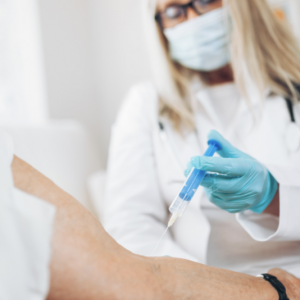A Shot In The Dark: Challenges Ahead With COVID-19 Vaccines

A Shot In The Dark: Challenges Ahead With COVID-19 Vaccines
November 18, 2020
The recent reports look quite promising but the need for caution persists, so don’t break out the champagne quite yet. We now have press releases concerning the development and efficacy of 2 promising COVID-19 vaccines (as well as just-breaking news about the Oxford COVID vaccine which shows special promise in building a strong immune response with few side effects in older adults). Both Pfizer and Moderna have released preliminary information concerning their new mRNA COVID-19 vaccines, each of which uses new genetic technology to stimulate immune responses to fight COVID-19. This is an unprecedented scientific advancement that may truly herald a light at the end of our pandemic tunnel. But before we can get there, there are unanswered and challenging questions to consider.
First, we need to know more. The clinical trials for these new vaccines have been short in duration and small in size so we need more data to tell us whether these vaccines are truly as efficacious as they suggest, especially for the range of populations they will need to cover. As reported in Kaiser Health News, there’s been a tension between getting the vaccine developed quickly and getting it right, and while the FDA will provide review and emergency authorization in order to begin vaccine distribution, there is long term analysis to be done to tell us whether the vaccines actually prevent infection from COVID-19, or just prevent disease symptoms (so that asymptomatic transmission could still occur). Moreover, these vaccines raise significant questions for the longer term, including how long will the protection last, will they protect the most vulnerable among us, and how can we effectively distribute the vaccines to the hundreds of millions who need to be vaccinated?
Both the Moderna and Pfizer vaccines will require 2 doses several weeks apart for each person. While the Pfizer vaccine seems more fragile and requires delicate cold-containment (which the Moderna vaccine seems not to), distributing these vaccines will constitute a herculean challenge for state and local authorities. As the experts make clear, it’s the actual vaccinations, not the vaccines themselves, that save lives. Given the lack of a uniform Federal strategy to date, distribution will fall heavily to the states and few have the resources or funds to tackle this challenge. And despite what you may have heard about the military taking charge of vaccine distribution, experts also raise alarms about the ability of the military to both protect its own members as well as get the vaccine to underserved and rural areas of the country.
And then of course there is the question of whether Americans are willing to take the vaccine? A recent Gallup Poll reports that 58% of Americans say they would accept the vaccine (and 63% of those over 65 said they would accept it) but that still leaves a significant number of Americans who will need to be convinced with honest and transparent messaging that this is something they should commit to. The less compliance we have the less protective the vaccine will be. Can we mandate that people receive the vaccine? There is some precedent for mandatory vaccinations for children, but experts warn for the overall US population even discussing this should be a last resort. And the job to convince people to accept the vaccine won’t be any easier once people begin to receive the first dose and realize there may be some unpleasant, albeit short-term, side effects.
So while we may be on track for millions of Americans to begin receiving the vaccine before the end of 2020 (those first in line will likely be health care workers, first responders, and perhaps older and vulnerable adults living in congregate settings), we are probably still a good half-year or more away from having a significant portion of the population vaccinated. So until then, keep your masks in place and your friends at arms-distance, now and for the foreseeable future.







